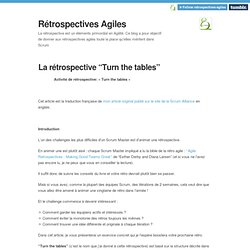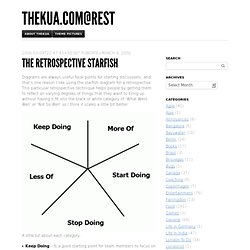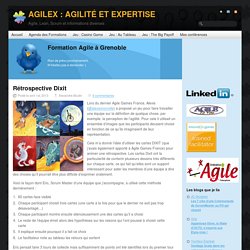

Retrospective using Jimmy Cards. I had taken on to facilitate a retrospective for my colleagues’ team.

They wanted a different retrospective than the usual. So we borrowed Crisp’s office and used Jimmy Cards! The group was around 15 persons from two teams. They all knew each other well which I believe is crucial as the questions on the cards can be challenging. In this post I’ll give you the recipe which Jimmy and I came up with for this particular retrospective. Divide the participants in groups of size about 5 persons. The retrospective has two phases: Throwing questions at each other and coming up with improvement themes.Discussing selected themes, current situation and definition of awesome.
Give each group a number of cards to choose from. The first phase has several rounds where one round is like this: A group selects a card with a question they like to hear the answer to.The group selects another group that are asked the question.The group that got the question tries to come up with as many answers as possible. Blog de Bruno Orsier.
Rétrospectives Agiles — La rétrospective "Turn the tables" Activité de rétrospective: « Turn the tables » Cet article est la traduction française de mon article original publié sur le site de la Scrum Alliance en anglais.

Introduction L’un des challenges les plus difficiles d’un Scrum Master est d’animer une rétrospective. En animer une est plutôt aisé : chaque Scrum Master impliqué a lu la bible de la rétro agile : “Agile Retrospectives - Making Good Teams Great” de “Esther Derby and Diana Larsen” (et si vous ne l’avez pas encore lu, je ne peux que vous en conseiller la lecture). Il suffit donc de suivre les conseils du livre et votre rétro devrait plutôt bien se passer. Mais si vous avez, comme la plupart des équipes Scrum, des itérations de 2 semaines, cela veut dire que vous allez être amené à animer une vingtaine de rétro dans l’année !
Et le challenge commence à devenir intéressant : Comment garder les équipiers actifs et intéressés ? Dans cet article, je vous présenterai un exercice concret qui je l’espère boostera votre prochaine rétro. 1. 2. The Retrospective Starfish. Diagrams are always useful focal points for starting discussions, and that’s one reason I like using the starfish diagram for a retrospective.

This particular retrospective technique helps people by getting them to reflect on varying degrees of things that they want to bring up, without having it fit into the black or white category of ‘What Went Well’ or ‘Not So Well’ so I think it scales a little bit better. A little bit about each category: Keep Doing – Is a good starting point for team members to focus on typically all the good things that they liked about a project. You might want to encourage people to think about things in terms of, what would they miss if they didn’t have a particular practice, technique, technology, person, role, etc. Interpreting the Starfish Getting people to either write things up under the starfish in this manner gives you a scattergram of sorts and is a great visual technique of estimating the overall health of your project. Rétrospective Dixit.
Posté le avril 1st, 2013Alexandre Boutin Lors du dernier Agile Games France, Alexis (@alexismonville) a proposé un jeu pour faire travailler une équipe sur la définition de quelque chose, par exemple, la perception de l’agilité.

Pour cela il utilisait un ensemble d’images que les participants devaient choisir en fonction de ce qu’ils imaginaient de leur représentation.Cela m’a donné l’idée d’utiliser les cartes DIXIT (que j’avais également apporté à Agile Games France) pour animer une rétrospective.